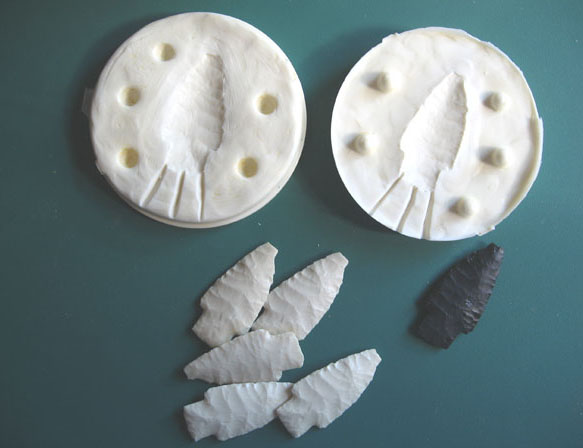Artifacts are often put on display as part of public engagement
efforts designed to involve the public with archaeological and historic
resources. These displays can be part of project open houses,
school‐based education programs, community and museum displays.
The use of original artifacts is often not permitted for extended periods of display.
These factors can include the fragile nature of the artifact, private ownership, or cultural sensitivity.
| |
Casts have been used in museum displays, school‐based education programs,
and public education workshops, as well as items to be presented to
First Nations communities, donors and collectors who relinquish
original artifacts, and institutions requesting additional studies.

0
Examples of replica casts next to the original artifact.
| |
Unlike other replication processes (e.g., 3D printing, flintknapping), casting involves making a highly detailed rubber mould of the original artifact. Numerous durable resin casts can then be made from the mould, transferring
precise details to these replicas which are then hand-painted to match the raw material of the original..
The same colour, weight, and finish can be replicated, resulting in a cast visually identical to the original artifact.
Any original artifact being cast will be subject to mild chemical and dye reactions (any sort of residue analysis
should be completed before process begins).
The cost of replicating an artifact depends entirely on the size, complexity, and raw material of the original.
Please contact me for a quote.





